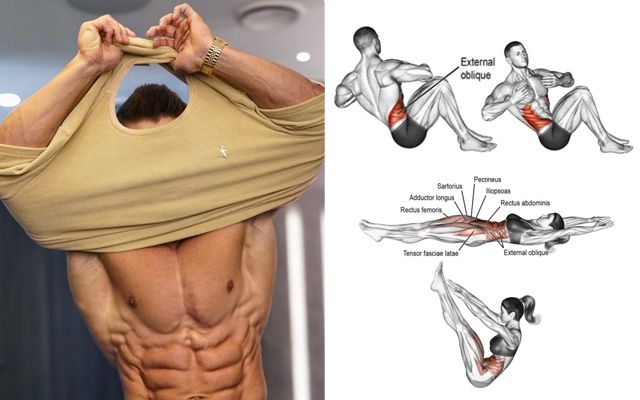When it comes to sculpting a strong, defined core, few exercises command as much attention as the Hanging Leg Raise. This powerful movement is not just a staple in the routines of fitness enthusiasts and athletes; it’s a proven method for targeting the muscles that make up the abdominal wall. But what makes this exercise so effective, and can it truly transform your abs?
In this article, we’ll delve into the mechanics of Hanging Leg Raises and uncover the reasons behind their effectiveness for strengthening and defining the abs. We’ll explore the specific muscles engaged, the benefits they offer beyond aesthetics, and the proper technique required to perform them safely and efficiently. Whether you’re a seasoned gym-goer or a fitness novice, understanding the impact of Hanging Leg Raises on your abdominal training can be a game-changer for your overall core development.
Join us as we raise the bar on core workouts and discover if Hanging Leg Raises are the key to achieving the coveted six-pack abs.
Introduction to Hanging Leg Raises
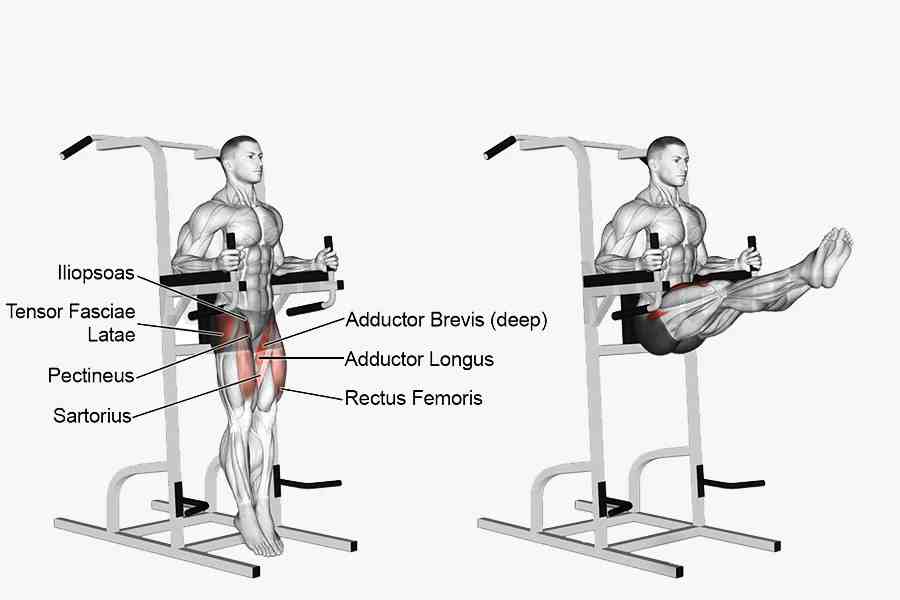
Hanging Leg Raises are a dynamic core exercise that involves suspending the body from a pull-up bar and lifting the legs to engage the abdominal muscles. This exercise is lauded for its ability to provide a comprehensive workout for the entire core, targeting not just the abs but also the obliques and hip flexors. Its popularity stems from its effectiveness in building core strength, stability, and endurance, which are essential for both everyday movements and athletic performance.
SHOP FOR THE PULL-UP BAR ON AMAZON
The movement’s efficiency in activating the core muscles makes it a favorite among those looking to enhance their abdominal definition. By requiring the body to stabilize during the leg lift, it also helps improve balance and coordination. Moreover, Hanging Leg Raises can be modified to suit various fitness levels, making them a versatile addition to any workout regimen.
In summary, Hanging Leg Raises stand out as a top-tier exercise for those seeking a challenging and fruitful path to a stronger, more resilient core.
Muscles Worked
During hanging leg raises, several muscles are actively engaged to perform the movement effectively. The primary muscles targeted include:
Rectus Abdominis: The rectus abdominis, commonly known as the “six-pack” muscle, is located along the front of the abdomen. It is responsible for flexing the spine, which is the main action during hanging leg raises as you lift your legs towards your torso.
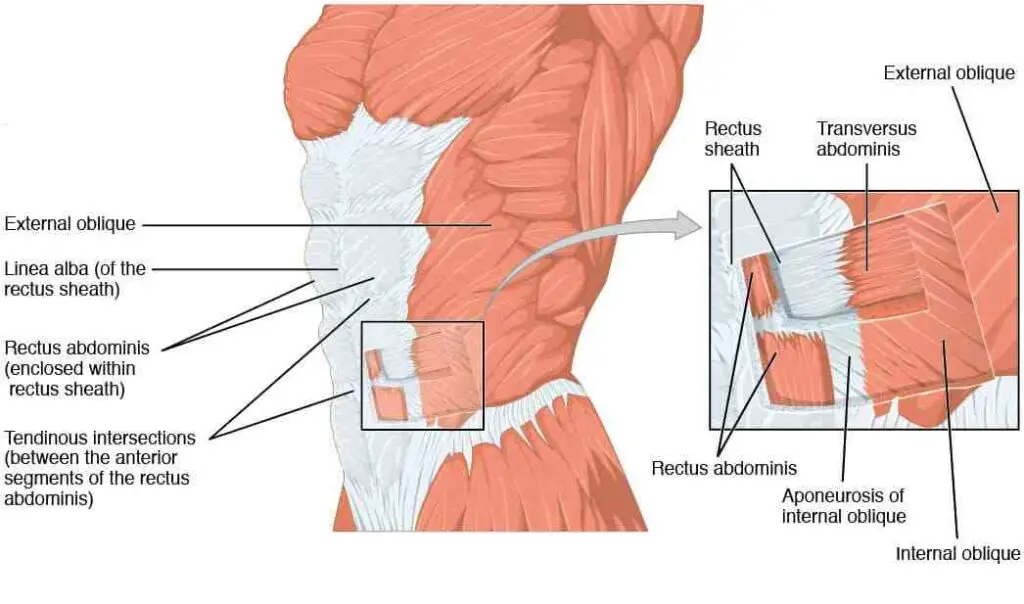
Hip Flexors (Iliopsoas): The hip flexors, including the iliopsoas muscles, are located at the front of the hips. These muscles assist in lifting the legs towards the torso during hanging leg raises.
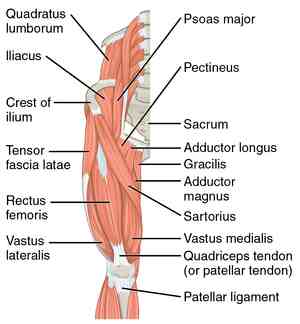
Obliques: The internal and external oblique muscles are located on the sides of the abdomen. While their primary function is rotation and lateral flexion of the trunk, they also play a stabilizing role during hanging leg raises to prevent excessive twisting and maintain control.
Transverse Abdominis: The transverse abdominis is a deep muscle layer that wraps around the abdomen like a corset. It provides stability and support to the core during hanging leg raises, helping to maintain proper alignment and prevent overarching of the lower back.
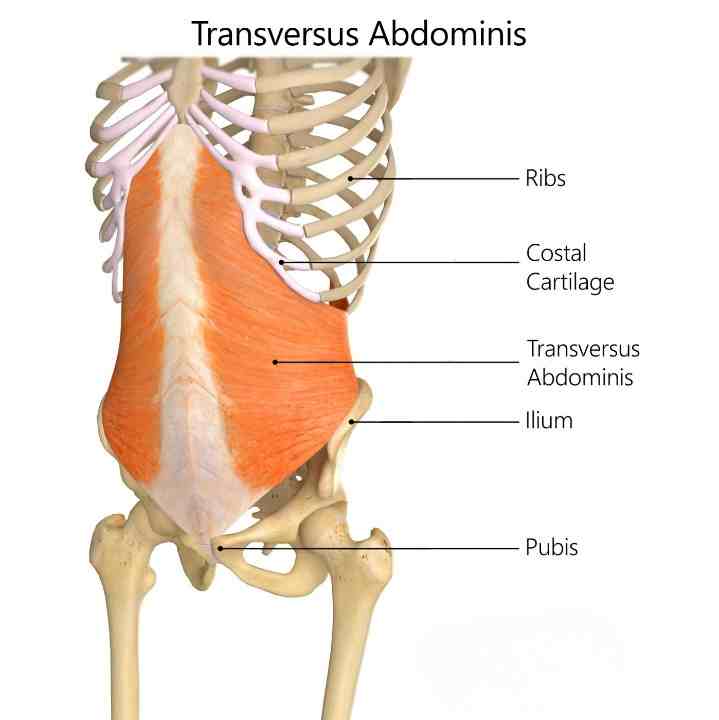
Hip Extensors (Gluteus Maximus): The gluteus maximus, the largest muscle in the buttocks, and other hip extensor muscles assist in stabilizing the pelvis and controlling the downward phase of the leg raise movement.

Hip Adductors and Abductors: Muscles responsible for moving the legs inward (adduction) and outward (abduction) also play a supporting role in stabilizing the pelvis and maintaining proper alignment during hanging leg raises.

Overall, hanging leg raises primarily target the abdominal muscles, including the rectus abdominis and obliques, while also engaging muscles of the hips and pelvis to support and control the movement. Proper form and technique are essential to effectively engage these muscles and maximize the benefits of the exercise.
Benefits of Hanging Leg Raises
When exploring the benefits of hanging leg raises, it’s important to consider how this exercise can contribute to overall fitness and core strength. Here are several key benefits to highlight:
- Core Strength: Hanging leg raises primarily target the muscles of the core, including the rectus abdominis, obliques, and hip flexors. By engaging these muscles, hanging leg raises help to strengthen the core, which is essential for stability, balance, and overall functional movement.
- Abdominal Development: Hanging leg raises are particularly effective at targeting the lower abdominals. The lifting motion requires the lower abs to contract forcefully to raise the legs, helping to tone and define this area of the abdomen.
- Improved Flexibility: Performing hanging leg raises can help improve flexibility in the hip flexors and hamstrings. This is especially beneficial for individuals who may have tight hip flexors or a limited range of motion in the lower body.
- Enhanced Grip Strength: Hanging leg raises require a strong grip to hold onto the overhead bar or apparatus. Over time, consistently performing this exercise can help improve grip strength, which can have carryover benefits to other exercises and daily activities.
- Functional Fitness: The core muscles targeted during hanging leg raises are crucial for various functional movements in daily life, such as bending, lifting, and twisting. Strengthening these muscles can improve overall functional fitness and reduce the risk of injury during activities of daily living.
- Scapular Stability: In addition to targeting the core, hanging leg raises also require stability in the shoulders and scapulae. This can help improve overall upper body stability and posture, especially when performed with proper form and control.
- Versatility: Hanging leg raises offer versatility in terms of progression and variation. As strength and proficiency improve, individuals can advance to more challenging variations, such as straight-leg raises, hanging windshield wipers, or adding ankle weights for resistance.
- Calorie Burn: Like any compound exercise that engages multiple muscle groups, hanging leg raises can contribute to calorie burn and aid in weight management when incorporated into a well-rounded fitness routine.
SHOP FOR THE WORKOUT GLOVES ON AMAZON
Incorporating Hanging Leg Raises into your workout regimen can thus provide a multitude of benefits, not just for your abs but for your overall physical health and fitness.
Proper Technique
To perform Hanging Leg Raises effectively and safely, it’s crucial to adhere to proper form and technique. Here’s a step-by-step guide to ensure you’re getting the most out of this exercise while minimizing the risk of injury:
Setup:
- Find a sturdy overhead bar or pull-up bar that can support your body weight. You may need to use a step or platform to reach the bar.
- Grasp the bar with an overhand grip, slightly wider than shoulder-width apart. Ensure your grip is secure before lifting your legs.
Proper Form:
- Hang from the bar with your arms fully extended and your shoulders relaxed. Your body should be straight, and your feet should not touch the ground.
- Engage your core muscles by pulling your belly button toward your spine. This will help stabilize your body throughout the exercise.
- Keep your legs straight or slightly bent at the knees, depending on your flexibility and comfort level. This will be your starting position.
- Slowly raise your legs upward by lifting your feet toward the ceiling. Focus on using your lower abdominal muscles to initiate the movement.
- Continue lifting until your legs are parallel to the ground or as high as you can comfortably go without swinging or using momentum. Keep your movements controlled and deliberate.
- Hold the raised position for a moment to fully contract your abdominal muscles.
- Lower your legs back down with control to return to the starting position. Avoid swinging or using momentum to lift your legs.
- Repeat the movement for the desired number of repetitions.
Tips for Proper Execution:
- Maintain a controlled pace throughout the exercise to maximize muscle engagement and minimize the risk of injury.
- Focus on quality over quantity. It’s better to perform fewer repetitions with proper form than to sacrifice form for more reps.
- Keep your upper body still and avoid swinging or using momentum to lift your legs. This ensures that your abdominal muscles are doing the work.
- Breathe steadily throughout the movement. Inhale as you lower your legs and exhale as you raise them.
- If you’re unable to perform full hanging leg raises with straight legs, you can start with bent-knee raises and gradually work your way up to straight-leg raises as your strength improves.
SHOP FOR THE AB STRAPS ON AMAZON
By following these guidelines for setup and proper form, you can perform hanging leg raises safely and effectively to target your abdominal muscles.
Are Hanging Leg Raises Good for Abs?
Yes, Hanging Leg Raises are excellent for developing the abs. They are a highly effective core exercise that targets the rectus abdominis, which is the front sheath of the abdominal muscles often referred to as the “six-pack.” By lifting your legs while hanging, you engage these muscles deeply, which can lead to improved muscle tone and strength.
Additionally, this exercise also works the obliques and hip flexors, contributing to overall core stability and function. The key to getting the most out of Hanging Leg Raises is to perform them with proper form, ensuring that you’re using your core muscles to do the work rather than relying on momentum.
For those looking to enhance their abdominal strength and definition, incorporating Hanging Leg Raises into a balanced workout routine can be very beneficial. However, it’s important to note that while they can strengthen and tone the abdominal muscles, they should be combined with a healthy diet and overall fitness plan for best results in terms of fat loss and muscle definition.
Common Mistakes
When performing Hanging Leg Raises, it’s important to be aware of common mistakes that can compromise the exercise’s effectiveness and increase the risk of injury. Here are some key errors to avoid:
- Using Momentum: Swinging the legs to lift them up uses momentum rather than muscle strength, which reduces the exercise’s effectiveness for the abs and can lead to lower back strain.
- Improper Pelvic Position: Failing to maintain a posterior pelvic tilt throughout the movement can cause the lower back to arch, placing undue stress on the spine and diminishing the engagement of the abdominal muscles.
- Incomplete Range of Motion: Not raising the legs high enough (ideally to hip level or above) limits the activation of the core muscles. Conversely, lifting the legs too high can shift the focus from the abs to the hip flexors.
- Rapid Leg Descent: Letting the legs fall too quickly on the downward phase fails to engage the abs effectively and can lead to a loss of control, which may result in back pain or injury.
- Bending the Knees: While a slight bend in the knees is acceptable, excessive bending can reduce the intensity of the exercise and the involvement of the core muscles.
- Elbow Bending: Bending the elbows while hanging can shift the focus away from the core and reduce the stability required for the exercise.
- Lack of Shoulder Engagement: Not engaging the shoulders properly can lead to a loss of upper body stability, making it harder to isolate the abs during the exercise.
- Poor Head and Neck Alignment: Craning the neck forward or looking up can create tension in the neck and misalign the spine, which can detract from the focus on the abs.
SHOP FOR THE ANKLE WEIGHTS ON AMAZON
By avoiding these common mistakes and focusing on proper form and controlled movements, you can maximize the benefits of Hanging Leg Raises and help prevent injury. Always listen to your body and make adjustments as needed to ensure a safe and effective workout.
Variations and Progressions
Hanging leg raises offer versatility through various modifications and variations. Here are some different variations of hanging leg raises:
Pre- or Post-Workout Stretching for Abs
- Straight Leg Raises: This is the basic form of hanging leg raises where you keep your legs straight throughout the movement. It primarily targets the lower abdominal muscles.
- Bent Knee Raises: In this variation, you bend your knees as you raise your legs toward your chest. This can be a slightly easier variation compared to straight leg raises and may engage the hip flexors to a greater extent.
- Side-to-Side Leg Raises: Instead of lifting your legs straight up, alternate lifting them to the sides in a controlled manner. This targets the oblique muscles on the sides of your abdomen.
- Scissor Kicks: Begin with your legs straight and slightly apart. Alternate raising one leg higher than the other, crossing them over each other in a scissor-like motion. This variation engages the entire abdominal region.
- Windshield Wipers: From a hanging position, raise your legs to one side until they are parallel to the ground, then lower them to the opposite side. This challenges your core stability and targets the obliques.
- L-Sit Raises: Lift your legs until they are parallel to the ground and hold that position (an L-shape) for a few seconds before lowering them back down. This variation requires significant core strength and stability.
- Weighted Leg Raises: Add ankle weights or hold a dumbbell between your feet to increase the resistance and difficulty of the exercise. This can help in building strength and muscle mass in the abdominal muscles.
- Hanging Knee Tucks: Instead of raising your legs straight, bend your knees and bring them toward your chest, focusing on contracting your abs. This variation is easier than straight leg raises and can be a good starting point for beginners.
Here are several ways to progress with hanging leg raises:
- Increase Volume Gradually: Add more reps or sets incrementally to your routine. This gradual increase will help build endurance and strength without overwhelming your muscles.
- Add Weight: Once you’re comfortable with bodyweight leg raises, consider adding ankle weights or holding a medicine ball between your feet for added resistance.
- Improve Time Under Tension: Slow down the movement, especially on the descent, to increase the time your muscles are under tension. This can lead to greater strength gains.
- Incorporate Pauses: Add a pause at the top of the movement to intensify the exercise and increase core activation.
- Use Different Grips: Change your grip on the bar (e.g., wider, narrower, mixed) to challenge your muscles in new ways and improve grip strength.
- Practice Negative Reps: Focus on the eccentric (lowering) phase of the exercise by lowering your legs very slowly to maximize muscle engagement.
- Combine Movements: Integrate other movements with leg raises, such as a pull-up or a knee to elbow touch, to work multiple muscle groups simultaneously.
- Train for Endurance: Occasionally, switch to endurance training by doing as many reps as possible in a set time frame to challenge your muscular endurance.
Is It Safe to Do HIIT Every Day?
Remember, it’s important to listen to your body and progress at a pace that feels right for you. Incorporating these variations into your routine can keep your workouts fresh and challenging, leading to continued improvement in core strength and stability.
Who Should Avoid Hanging Leg Raises?
Here are some groups who should consider avoiding hanging leg raises:
- Beginners: New Individuals to exercise or have limited core strength may struggle with hanging leg raises. It’s important to build a foundational level of strength and stability before attempting this advanced exercise.
- Lower Back Issues: People with a history of lower back pain or injury should be cautious with hanging leg raises, as the exercise can put strain on the lumbar spine. They may benefit from alternative exercises that are less stressful on the lower back.
- Shoulder Problems: Those with shoulder issues or mobility restrictions may find hanging from a bar uncomfortable or exacerbating. Hanging leg raises require shoulder stability, so individuals with shoulder injuries should avoid this exercise or seek modifications.
- Pregnant Women: Pregnant women, particularly in the later stages of pregnancy, should avoid hanging leg raises due to the increased strain on the abdominal muscles and the potential risk of falling. Pregnancy alters the body’s center of gravity and can compromise balance.
- Individuals with Weak Grip Strength: Since hanging leg raises require a strong grip to hold onto a bar, individuals with weak grip strength may struggle with this exercise. They can work on grip strength separately before attempting hanging leg raises.
- Those with Hernias: Individuals with hernias, particularly abdominal hernias, should avoid exercises that put pressure on the abdominal wall, including hanging leg raises. These exercises can exacerbate the condition and potentially lead to complications.
- Individuals with Joint Pain: Those experiencing joint pain, especially in the wrists, elbows, or shoulders, may find hanging leg raises uncomfortable or aggravating. They should choose exercises that don’t exacerbate their joint pain and discomfort.
- Anyone with Dizziness or Vertigo: Individuals who experience dizziness or vertigo may feel disoriented or lightheaded when hanging upside down during leg raises. This can increase the risk of falls or injury, so it’s best to avoid exercise in these cases.
Strengthening Upper Back with Dumbbells
Individuals need to listen to their bodies, exercise caution, and consult with a healthcare professional or qualified fitness trainer before attempting hanging leg raises, especially if they have any underlying health concerns or physical limitations.
FAQs
Q 1. How often should I perform Hanging Leg Raises?
Ans. It’s generally recommended to include core exercises like Hanging Leg Raises 2-3 times per week, allowing for rest days in between to let the muscles recover.
Q 2. Can Hanging Leg Raises help reduce belly fat?
Ans. While they strengthen and tone the core muscles, Hanging Leg Raises alone cannot spot-reduce belly fat. A combination of regular exercise, a healthy diet, and overall fat loss is necessary for visible abs.
Q 3. How can I prevent calluses from forming on my hands while doing Hanging Leg Raises?
Ans. Using grip-enhancing gloves or applying chalk to your hands can reduce friction and help prevent calluses. Also, ensure you’re gripping the bar correctly.
Q 4. Is it normal to feel the exercise in my hip flexors more than my abs?
Ans. Yes, especially if you’re new to the exercise or have strong hip flexors. As you progress and focus on engaging your core, you’ll start to feel it more in your abs.
Q 5. How long does it take to see results from Hanging Leg Raises?
Ans. Results can vary based on your overall fitness routine, diet, and consistency with the exercise. Generally, with consistent training, you may start to see improvements in strength and muscle definition within a few weeks.
Q 6. Do Hanging Leg Raises put pressure on the lower back?
Ans. If performed with proper form, including maintaining a posterior pelvic tilt, they should not put undue pressure on the lower back. However, if you have pre-existing back issues, consult with a professional before attempting this exercise.
Q 7. Can I do Hanging Leg Raises every day?
Ans. It’s not recommended to do any intense strength training exercise daily as your muscles need time to recover. Instead, focus on quality over quantity and allow for rest days.
Conclusion
In conclusion, Hanging Leg Raises are a formidable exercise for those seeking to enhance their core strength and sculpt their abdominal muscles. This exercise not only targets the rectus abdominis but also engages the obliques and hip flexors, making it a comprehensive workout for the entire core. The benefits of Hanging Leg Raises extend beyond aesthetics, contributing to improved posture, back support, and overall functional fitness.
However, it’s crucial to approach this exercise with caution, adhering to proper form and technique to reap the benefits while minimizing the risk of injury. It’s also important to recognize that Hanging Leg Raises may not be suitable for everyone, particularly those with certain health conditions or recovering from injuries.
For those who can safely incorporate Hanging Leg Raises into their fitness routine, the exercise offers a challenging yet rewarding path to a stronger, more resilient core. As with any exercise, consistency, patience, and a focus on quality movements are key to achieving the best results. Whether you’re a fitness novice or a seasoned athlete, Hanging Leg Raises can be a valuable addition to your workout arsenal, helping you build the core strength that is foundational to all physical activities.

Good day, and welcome to Fitthour. My name is Shubham Vijay, and I am a certified personal trainer and nutrition coach with 6 years of experience in the fitness industry. At Fitthour, we specialize in types of training, such as strength training, cardio, or HIIT, and our mission is to help clients achieve their fitness goals and improve their overall health.

